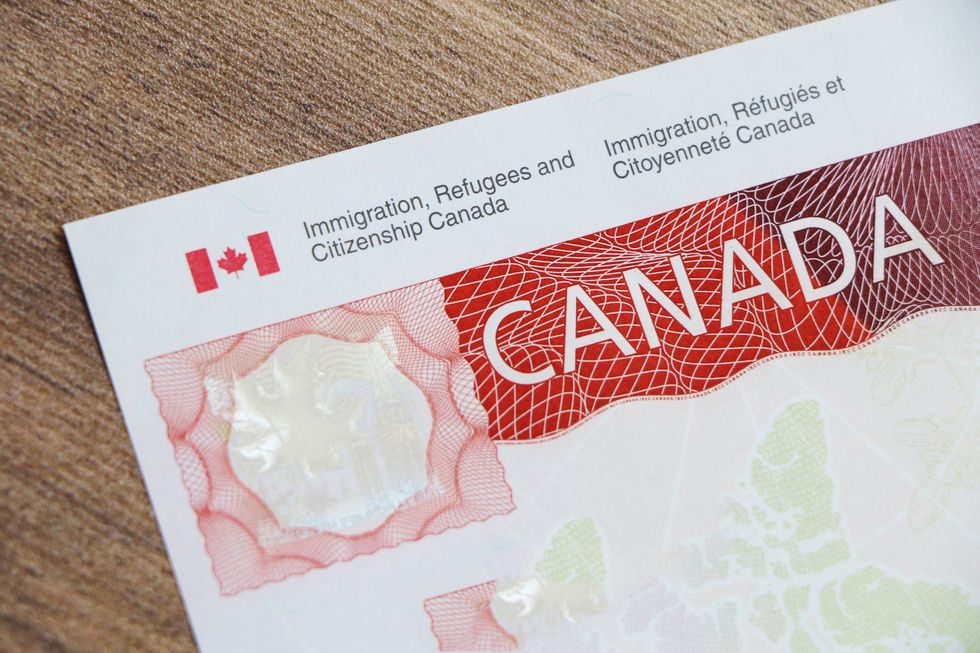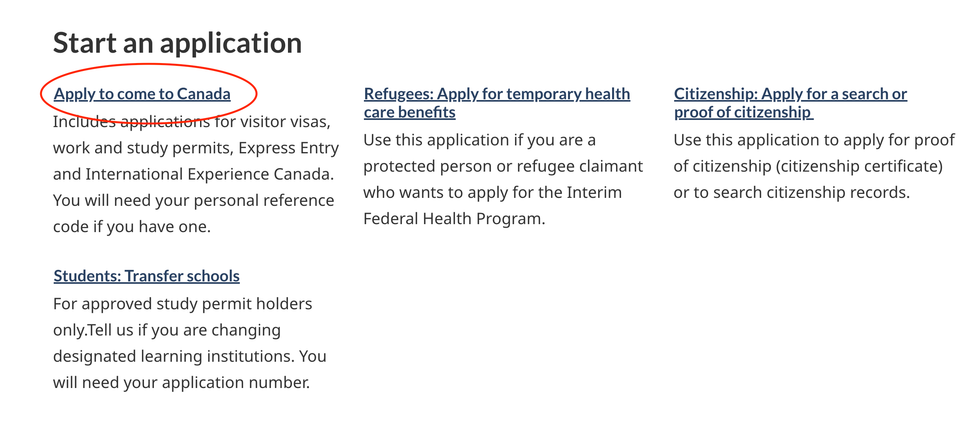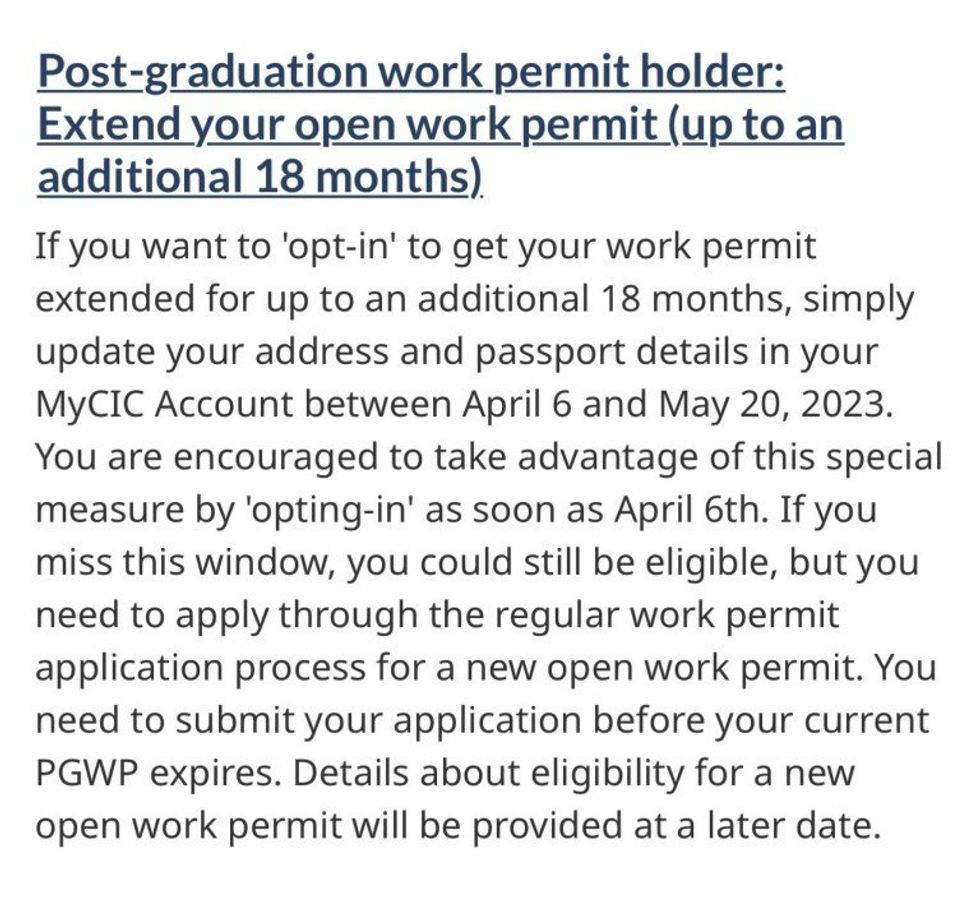
Work permit extensions and even fresh applications can be a challenging experience in Canada — factors like processing times are just beyond our control, so frustration is bound to creep in.
I, for one, speak from experience — having made the long journey from arriving in Canada on a study permit (student visa) and then getting a Post Graduation Work Permit (PGWP) before applying for an extension.
All of this to eventually be able to stand a chance for a Permanent Residence (PR) through the Express Entry stream for Federal Skilled Workers (FSW) or the Canadian Experience Class (CEC).
But more on the PR bit later. Let's first talk about Canadian Work Permits and all the necessary details to keep in mind. I'll address some FAQs and highlight necessary details (including fees, required documents, types of work permits etc) from my own experience.
What is a Canadian Work Permit?

Most foreign nationals need a work permit to legally work in Canada, as per Immigration, Refugees and Citizenship Canada (IRCC). The only exceptions are applicants who fall under any of the categories listed on this page.
Even the citizens of specific countries, like the USA, Australia, New Zealand, Germany or Ireland, who are offered a working holiday visa in Canada are required to obtain a work permit.
But overall, there are two types of work permits: 1. An open work permit and 2. An employer-specific work permit. I was eligible for the former following the successful completion of a degree from a Designated Learning Institution (DLI).
What is an Open Work Permit?
— (@)
According to IRCC, "an open work permit lets you work for any employer in Canada.. except for one that is listed as ineligible on the list of employers who have failed to comply with the conditions, or regularly offers striptease, erotic dance, escort services or erotic massages.”
All such graduates, including yours truly, are eligible for an open work permit called the Post Graduation Work Permit (PGWP) having studied for a minimum of eight months. This requires a separate application to a study permit.
The length of a PGWP depends on the duration of your course and your study permit. My two-semester degree got me a one-year permit whereas some other international students who studied for two such courses or a single two-year long course, were eligible for three-year PGWPs.
In the light of the pandemic, the IRCC had even enabled extensions of any existing PGWPs, which we'll discuss further below.
It's worth noting that foreign nationals on students visas do not need a separate permit to seek part-time work. There used to be a cap on weekly hours, but that was changed recently.
How to apply for a Canadian Work Permit?

Okay, so let's talk about my open work permit application. I had originally applied for a PGWP, as mentioned earlier.
It required me to log in to my IRCC account via GCKey and then scroll down to the 'Start an Application' section on my Account Home page.
Now, click on Apply to come to Canada and scroll down to the section titled Determine your eligibility and apply online. Choose Visitor visa, study and/or work permit and fill out the following questionnaire to determine your eligibility.
In my case, I was found eligible for a PGWP. Next, click on Continue and proceed to fill out more eligibility questions like academic details of your Canadian institution etc.
Upon successful completion of this step, you'll then reach the checklist page which requires you to upload transcripts, a filled IMM5710 form and some other documents like your passport and letter of completion. You will now be asked to pay your fees.
How much is the cost of applying for a work permit?

For my PGWP (open work permit), I paid a total of $255, including work permit fee ($155) and open work permit holder fee ($100) to process my application.
It costs $255 for all other open work permit applications, but if you have never submitted your biometrics for Canadian immigration, then you'll also have to do that, for an additional $85.
In case of extensions, you'll be required to pay the $100 open work permit fee — which is also going to be the base fee for each application regarding a worker status.
In case you have lost your status as a worker, the total cost of restoring it totals to $355.
My one-year PGWP was set to expire in 12 months, which would've required me to pay the $100 fee for extension. But all former International students whose PGWP was expiring/had expired between September 20, 2021, and December 31, 2023 qualified for an 18-month extension, under a recent government policy.
And the best part: it was free of cost! The deadline to have availed the waiver might have passed, but it is still possible if you qualify as part of the policy updates highlighted in the next section.
NOTE: All application fees listed here.
What happens after PGWP expires?

So this is where it gets interesting. There are a few different scenarios that could apply to you. I've detailed three common ones below:
- You are eligible for an extension under the recent special measure (similar to the one from 2022) — this makes it easier to extend an open work permit. To be eligible, you must currently be living in Canada and hold an open work permit that expires/has expired between September 20, 2021, and December 31, 2023 — and your passport should also be valid for at least 18 months from the date of application.
Since I was eligible for this, I selected the Opt-in option within the Start an Application section on the homepage of my IRCC account. The deadline to opt-in was May 20 though, so you won't see it at present. I wasn't charged a fee for this extension - Beyond May 20 of this year, applicants can still apply under this measure if their PGWP is expiring/has expired within the said dates. You will need to satisfy these conditions though, as per IRCC:
- Have a valid passport.
- To maximize the duration of the open work permit, make sure your passport is valid for at least 18 months from the date your PGWP expires (if your PGWP is still valid) or from the date your application is approved (if your PGWP has expired).
- For example, if your passport is valid for 24 months, you will be issued an open work permit for the full 18 months. However, if your passport is valid for 12 months, you will be issued an open work permit for 12 months.
- This also applies to those who have lost their temporary resident status, but have already applied to restore it — or lost temporary resident status, but will apply to restore it at the same time as they apply for this open work permit
- This also applies if you lost your status not more than 90 days ago
Once you satisfy these conditions, you'll have to pay the open work permit fee, as per the section above
- And if you don't qualify for any of the above, your best bet is to apply for an Open Work Permit using the steps here. Remember to apply before at least 30 days before your current permit expires. Find out if you are eligible to work while you wait for your extended work permit to arrive using this tool. In terms of fees, you'll have to pay the fees for restoration of worker status in addition to the open work permit and biometric fee, if applicable
How long does it take to get a work permit in Canada in 2023?
Work permit processing times vary depending on when and how you apply. Online
Current work permit applications (both new and extension) will take 147 days if you applied online and 14 days if you applied on paper, as per this IRCC tool.
I had applied for my original PGWP in May 2022 and received the hard copy of the document in September. As for the extension, I had opted-in by the first half of April 2023 and it took till the second week of July for the paper to arrive in my mailbox.
Can I work while waiting for my work permit extension in Canada?
In case of extensions, "you’re authorized to continue working under the same conditions as your current work permit," as per IRCC.
"You can show your employer proof that you submitted your application. Valid forms of proof include
a copy of your work permit application, proof that you paid your fees or a copy of postal or courier tracking information."
You will not receive an acknowledgment of your fees if you applied on paper. But the processing times for paper-based applications are usually low, which might not even create such a loss of status for you.
For fresh applications, "you're authorized to work until a decision is made on your work permit application even if the 120-day validity date (of the payment acknowledgment) has expired," according to IRCC.
If you need further proof of authorization to continue working, you can ask for it through a web form.
In the period between May and September last year, my Study Permit had expired while my Work Permit was still being processed. But within this policy, I was on what is commonly referred to as an "Implied" status, which allowed me to work legally in Canada.
Can I apply for PR after PGWP?
— (@)
I was also able to create an Express Entry profile soon after getting a PGWP. You will need a separate set of documents, including foreign educational assessments for academic records from outside Canada. Agencies like World Education Services convert it into the equivalent of Canadian education to help you fill out the required details.
You'll also need to have recognised language scores for either English or French or both. I used my IELTS test results to fill out the Express Entry PR application. The portal will calculate a Comprehensive Ranking Score (CRS) on the basis of this information. Other details, such as foreign work experience, boost your chances of increasing your score.
Every two weeks or so, the IRCC releases comprehensive ranking score cut-offs for qualifying candidates. If your profile clears this score, you will be invited to apply for a PR.
Having worked full-time on a valid work permit for at least a year in Canada increases your chances significantly to be invited to apply for a PR by making you eligible for the Canadian Experience Class (CEC) category within Express Entry.
What are the STEM occupations for PR applications?
For the first time, as part of the CRS cut-off process, IRCC has recently launched profession-specific draws, which is determined by the occupation code that you put in as part of your primary vocation and work experience within the Express Entry profile. This includes Science, Technology, Engineering and Math (STEM) occupations, but also extends to:
- French-language proficiency
- Healthcare occupations
- Science, Technology, Engineering and Math (STEM) occupations
- Trade occupations
- Transport occupations
- Agriculture and agri-food occupations
What is an employer-specific work permit?
This is the second category of Canadian work permits — it includes all other work permits that don't qualify as open work permits.
Foreign nationals (usually outside Canada), who have job offers from Canadian employers, are eligible to apply for this kind of Canadian work permits. It "lets you work in Canada according to the conditions on your work permit."
The following details will be mentioned on this type of a work permit and you will be asked to strictly comply to:
- The name of the specific employer you can work for
- How long you can work
- The location where you can work (if applicable)
Before you apply for an employer-specific work permit, your must obtain at least one of the following from your employer in addition to the employment letter, as per IRCC:
- A copy of a labour market impact assessment (LMIA)
- An offer of employment number (for LMIA-exempt workers)
It's important to note that:
- Your employer must use the Employer Portal
- If your employer doesn’t need to use the Employer Portal
- If your employer does not need to use the Employer Portal to submit an offer of employment, they must give you a copy of the employment contract
IRCC recommends applying online via the LMIA Online Portal as "the fastest way." To access the LMIA Online Portal, your employer must have a Job Bank account, says the website.
"Employers must pay $1,000 for each position requested (for example $1,000 x number of positions = total payment) to cover the cost of processing a dual intent LMIA application."
Let us know if you found this information helpful and/or you'd like to read about more first-person immigration-related experiences at Narcity.
I Got My Canadian Work Permit Extended & Here's How Much The Whole Process Costs
Source: News Article Viral


0 Comments